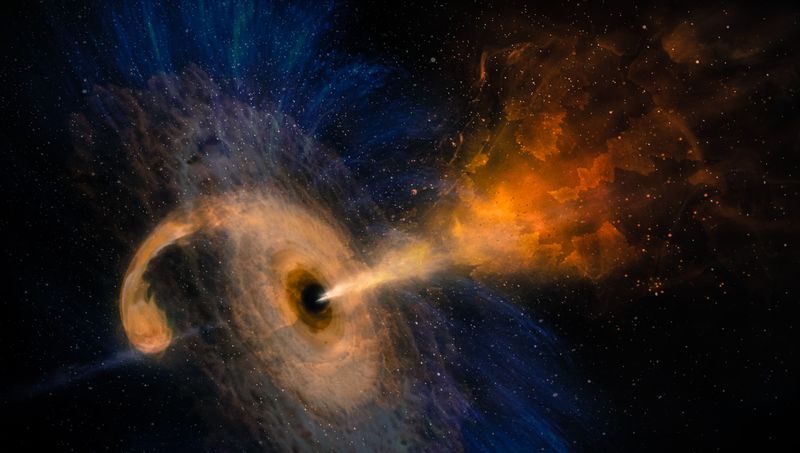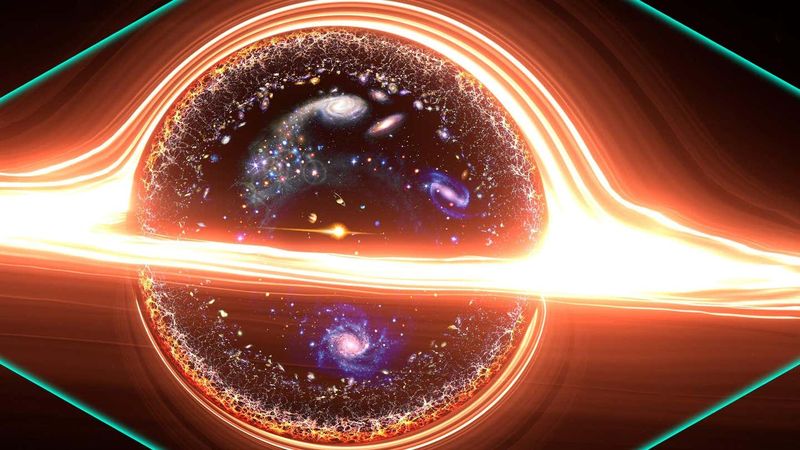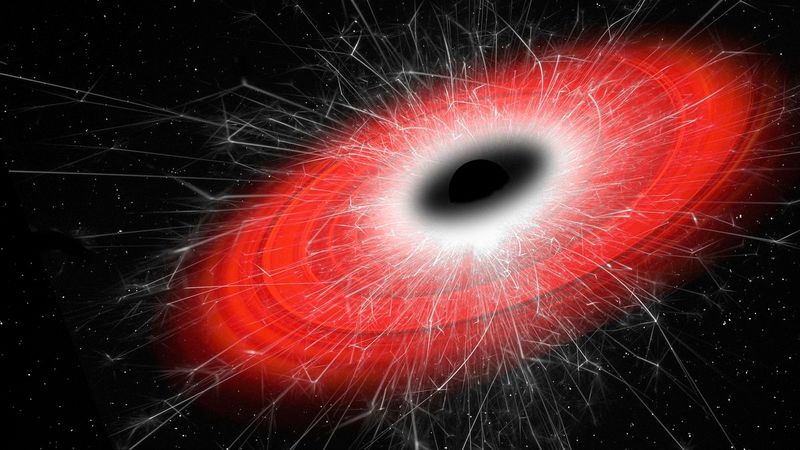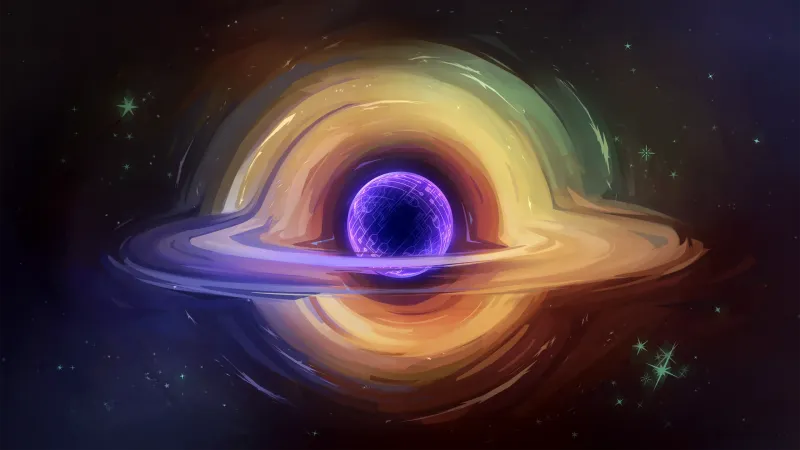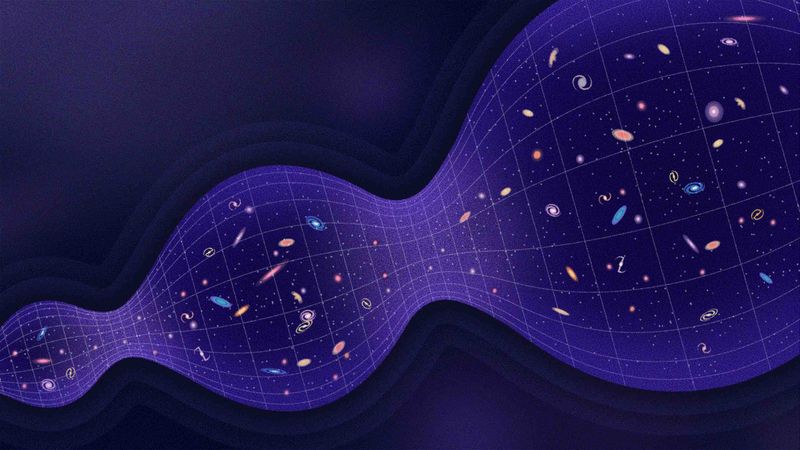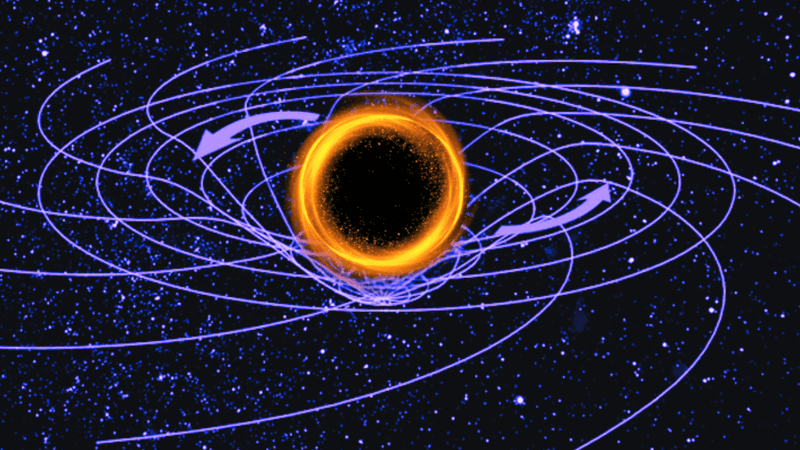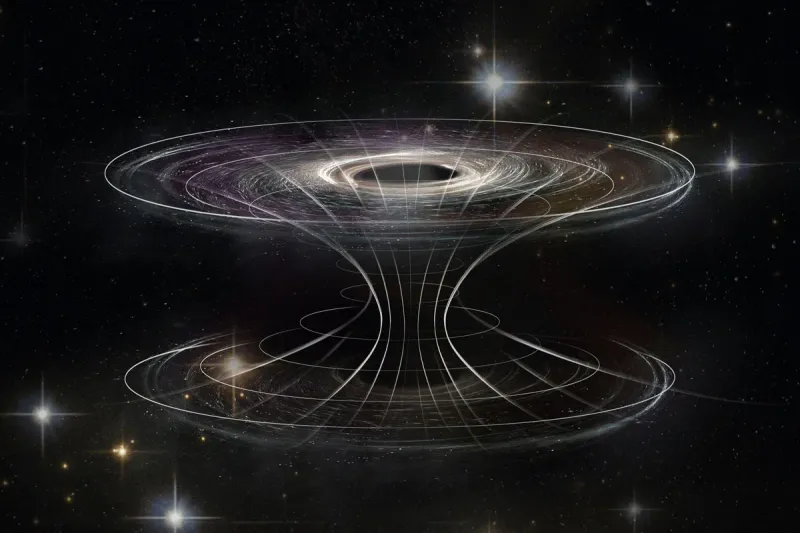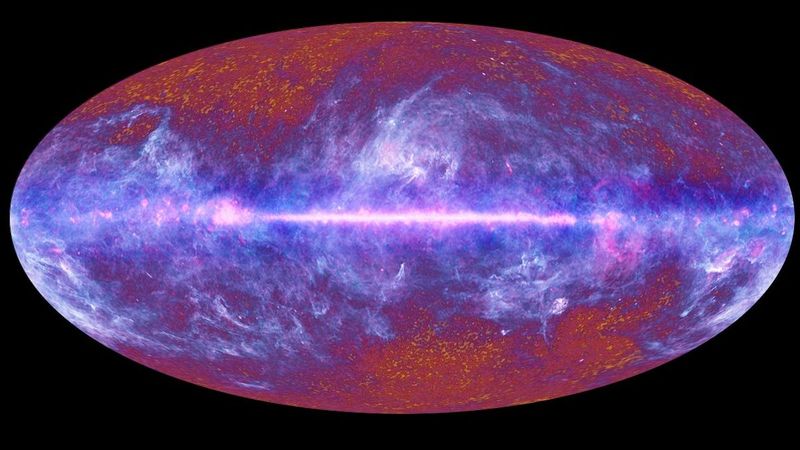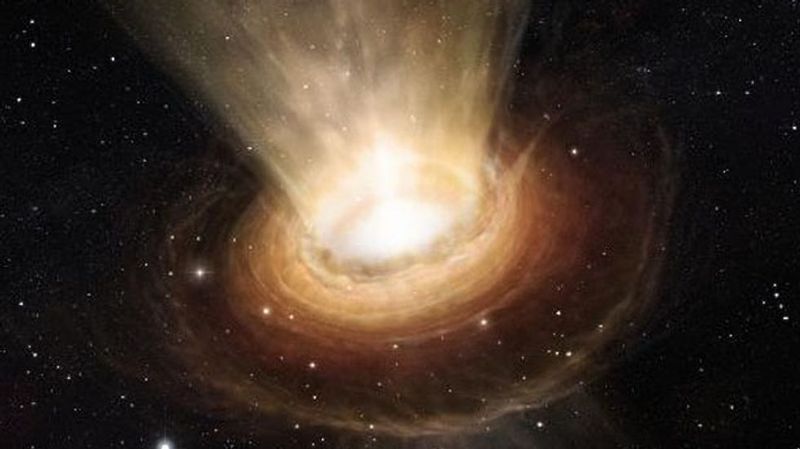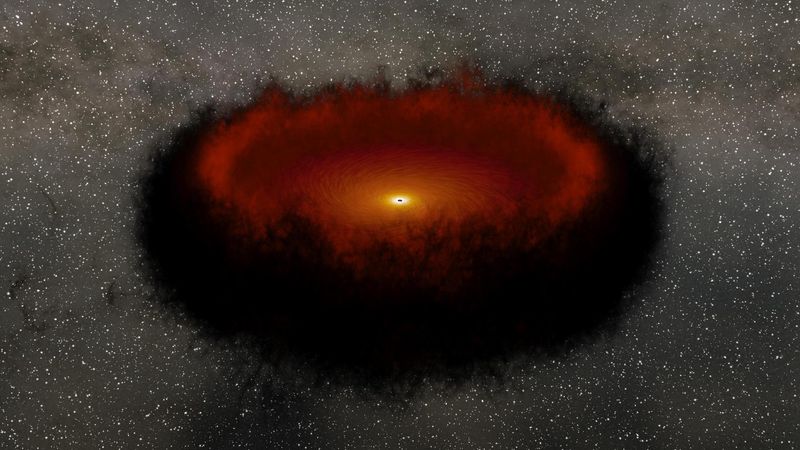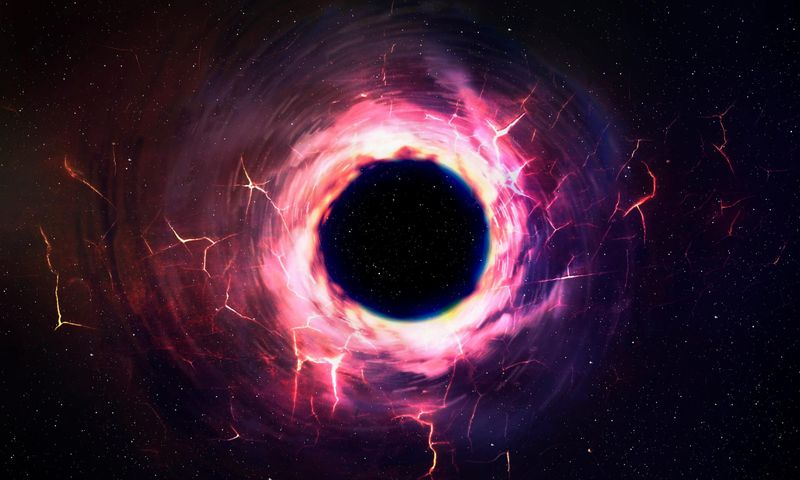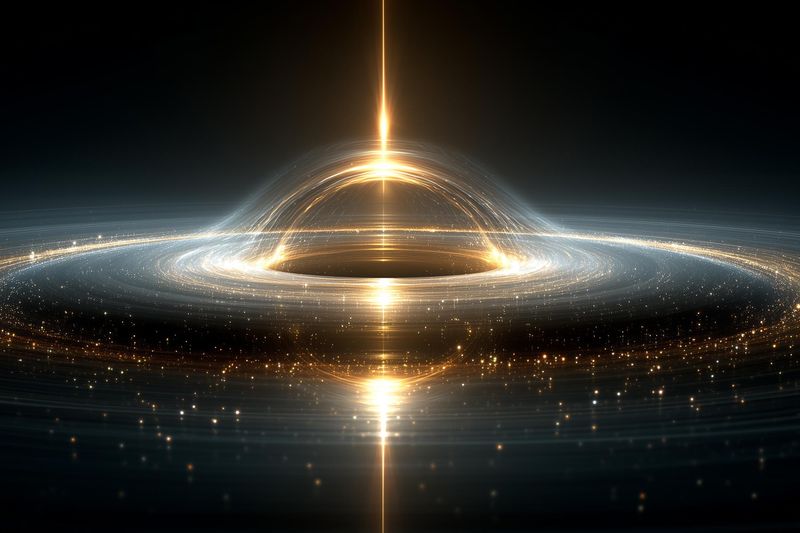For decades, the Big Bang has been the reigning theory about the universe’s origin. But now, a bold new theory involving black holes is turning that idea on its head. A group of theoretical physicists believes that black holes may have existed before the Big Bang—and could even be the cause of our universe. Here are 17 mind-bending ideas from this groundbreaking black hole theory that challenge everything we thought we knew.
1. The Universe Didn’t Begin—It Bounced
Consider the universe not as a linear journey from one point to another, but as a cyclical dance of rebirth and renewal. When the universe collapses into a black hole, it doesn’t end; it prepares for a new beginning. This cosmic bounce defies the traditional notion of a singular Big Bang, suggesting instead a cyclical pattern. This revolutionary idea paints the universe as a phoenix, continually rising from its own ashes.
2. Black Holes Are Cosmic Time Capsules
These enigmatic entities could be more than just destructive forces; they might be preserving the secrets of previous cosmic epochs. By storing information, black holes could connect us to the mysteries of a time before time itself. What if, during the universe’s rebirth, these cosmic time capsules release their ancient knowledge, weaving it into the fabric of our reality? This concept transforms black holes into cosmic libraries, holding the keys to our universe’s deepest secrets.
3. Our Universe May Be Inside a Giant Black Hole
This bold idea reshapes our understanding of existence, suggesting that we are part of something much larger. By envisioning our universe as the interior of a black hole, formed in another universe, we explore a mind-bending cosmic nesting doll scenario. This perspective invites us to reconsider the boundaries of our universe and our place within an infinite, interconnected web of cosmic wonders.
4. Hawking Radiation Could Be the Clue
Hawking radiation, the gentle whisper of energy escaping a black hole’s grasp, might hold the answers to the mysteries of a pre-Big Bang era. This radiation, a faint glow against the cosmic backdrop, could carry remnants of a universe long gone. By studying these subtle clues, scientists hope to unlock secrets of what came before our universe’s grand awakening.
5. Quantum Gravity Rewrites the Rules
Quantum gravity, an avant-garde theory, offers a radical departure from conventional physics by allowing black holes to dodge total collapse. Instead of succumbing to singularities, they might reach a critical point and rebound. This groundbreaking idea redefines the cosmic cycle, suggesting a continuity rather than a cataclysmic end. With quantum gravity’s intricate dance, the universe’s rebirth becomes plausible, weaving the delicate tapestry of existence anew. Such theories invite us to explore uncharted territories of science, forever altering our perception of reality.
6. There May Have Been Multiple Big Bangs
Contemplate a universe not restricted to a single beginning, but a tapestry woven with multiple threads of creation. If black hole bounces are reality, the universe could have experienced several restarts. Each Big Bang becomes a continuation rather than a solitary origin. With every cosmic cycle, remnants of past universes shape the present, creating a rich tapestry of existence. This concept revolutionizes our understanding, portraying the universe as an ever-evolving masterpiece, continuously crafted by the rebirth of stars and galaxies.
7. Dark Matter Could Be Primordial Black Holes
In the enigmatic realm of dark matter, ancient black holes may lurk as primordial giants from a bygone cosmic era. These elusive entities could constitute the very fabric of dark matter, echoing from a time before the Big Bang itself. By peering into the shadows, scientists seek to unravel the mysteries of these ancient behemoths.
8. Time Could Run Backward Inside Black Holes
Step into the enigmatic world of black holes, where time defies convention and flows backward. Within these cosmic enigmas, the laws of physics could reverse, challenging our linear perception of time. This concept invites us to explore the mysteries of time itself, unlocking new dimensions of understanding within the cosmic tapestry. By embracing the reversal of time, we embark on a journey into the heart of cosmic paradoxes.
9. The Cosmic Microwave Background Holds Clues
The cosmic microwave background, a faint echo from the universe’s infancy, might conceal hidden secrets of a previous cosmic epoch. Tiny anomalies in this radiation could be scars from a universe born anew. By scrutinizing these cosmic remnants, scientists hope to trace the footprints of a black hole collapse that preceded our universe. Through this lens, the universe’s history becomes an open book, waiting to be explored.
10. Black Holes Might Not Destroy—But Recycle
In the cosmic theater, black holes may not be the ultimate destroyers, but instead the architects of renewal. Rather than annihilating everything in their grasp, they could recycle matter, seeding the cosmos with new life. This revolutionary idea redefines our perception of black holes, portraying them as engines of cosmic rebirth. This concept challenges the conventional narrative, inviting us to view black holes as the harbingers of new beginnings.
11. Entropy Isn’t the End
In the cosmic dance, entropy, the harbinger of chaos, may not signal the end but rather a reset. This paradigm shift invites us to reimagine the universe not as a linear journey to oblivion but as a perpetual cycle of renewal. By embracing this revolutionary concept, we uncover a deeper understanding of the cosmos, where the dance of order and chaos intertwines in an eternal waltz, forever shaping the universe.
12. Wormholes Could Be Part of the Picture
Step into the realm of cosmic possibilities, where wormholes within black holes weave a tapestry of connections. These enigmatic passages might bridge different epochs or even alternate universes, offering shortcuts through the fabric of space-time. This concept invites us to explore the frontiers of physics, where reality blurs and the boundaries of our universe dissolve. With wormholes as cosmic pathways, the universe becomes a vast network of interconnected wonders, waiting to be explored.
13. No Singularity, No Problem
In the world of black holes, singularities may be a myth. Instead of collapsing into infinitely dense points, they could reach a minimum volume before rebounding. This groundbreaking idea challenges the notion of singularities as insurmountable barriers. By envisioning black holes as dynamic entities, we unlock new possibilities for the universe’s evolution. This concept invites us to reconsider the very nature of black holes and their role in shaping reality.
14. Gravitational Waves May Carry Pre-Bang Echoes
Gravitational waves, ripples in the fabric of space-time, might hold echoes from a universe long past. By studying these waves, scientists hope to uncover signatures of a previous universe’s black hole collapse. Imagine the excitement of deciphering these cosmic signals, as they reveal insights into the mysteries of our cosmic ancestry. Through gravitational waves, we gain a glimpse into the universe’s hidden history, where the past and present converge in harmony.
15. Space-Time Is Not Infinite—But Loops
This revolutionary idea challenges the notion of an infinite universe, offering a cyclical perspective on existence. By embracing the concept of loops, we explore the universe as an eternal cycle of rebirth, where the past and future intertwine. Imagine a cosmos where time and space are not linear, but circular, inviting us to reconsider our place within this cosmic dance. Through the lens of loops, the universe becomes an intricate tapestry of endless possibilities.
16. It Could Explain the Universe’s Smoothness
The universe’s uncanny smoothness, a puzzle to scientists, might find an explanation in a pre-existing cosmos.This concept invites us to explore the idea of continuity, where the universe’s uniformity is not a coincidence but a legacy. By embracing this perspective, we uncover the hidden connections between past and present, revealing the universe as a masterpiece of cosmic design, where each era leaves an indelible mark on the fabric of reality.
17. We May Be Closer Than Ever to a Theory of Everything
In the quest for a unified theory of physics, the black hole theory could be the missing piece. This groundbreaking theory offers hope for a comprehensive understanding of the cosmos, where the fundamental forces of nature are woven into a single tapestry. By bridging the gap between the micro and macro scales, we move closer to a theory of everything, unlocking the secrets of the universe and our place within it.


